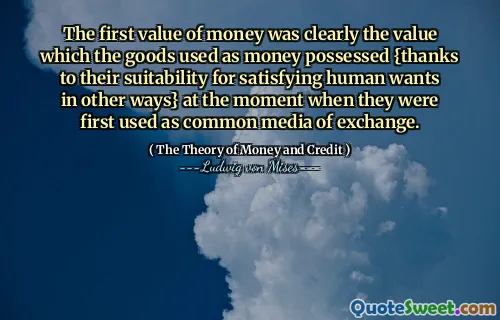The Theory of Money and Credit is a seminal work by economist Ludwig von Mises that explores the nature of money, its functions, and the role of credit in the economy. Mises argues that money is a tangible medium of exchange that facilitates trade by providing a common measure of value, which enhances economic efficiency. He emphasizes the importance of understanding the origins and functions of money to grasp its influence on market dynamics and economic activity.
In his analysis, Mises discusses the concept of credit and how it interacts with money to affect the broader economy. He explains that credit can amplify economic fluctuations, leading to cycles of boom and bust. By expanding credit, banks can create money, which can lead to inflation if not matched by real production. Mises advocates for sound money policies to mitigate the negative effects of credit expansion and economic instability.
The book delves into various monetary theories and critiques the approaches of other economists. Mises highlights the dangers of interventionist policies and argues for a free-market approach to monetary systems. His insights have had lasting implications for economic theory, influencing discussions around monetary policy, banking systems, and the relationship between money and economic cycles.
More »
Today Birthdays
1887 -
Robinson Jeffers
1864 -
George Washington Carver
1936 -
Stephen Ambrose
1953 -
Pat Benatar
1949 -
George Foreman
1945 -
Rod Stewart
1936 -
Robert Woodrow Wilson
1938 -
Donald Knuth
1974 -
Hrithik Roshan
1956 -
Antonio Munoz Molina
1980 -
Sarah Shahi
1936 -
Al Goldstein
1939 -
David Horowitz
1955 -
Michael Schenker
1986 -
Abbey Clancy
1959 -
Chris Van Hollen
1989 -
Emily Meade
